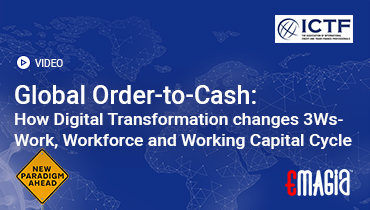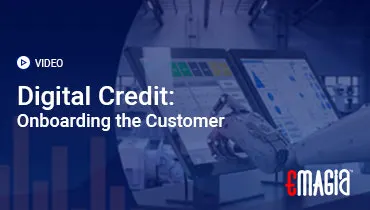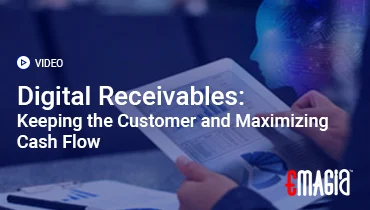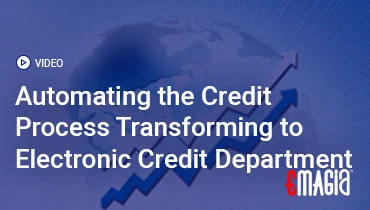Introduction: The Critical Need for Precise Financial Reconciliation
In the intricate world of finance and accounting, accuracy is not just a virtue; it’s a necessity. Every transaction, every ledger entry, and every bank statement must align perfectly to ensure a true and fair view of a company’s financial health. This crucial process of verifying that two sets of records match is known as reconciliation. For decades, this has been a labor-intensive, error-prone manual task, consuming countless hours for finance teams.
However, the advent of specialized reconciliation tools has revolutionized this fundamental accounting activity. Moving beyond manual spreadsheets, businesses now leverage sophisticated automated reconciliation software to streamline processes, enhance data integrity, and provide real-time financial insights. Understanding and implementing the right software for reconciliation is no longer a luxury but a strategic imperative for any organization aiming for financial excellence and operational efficiency.
This comprehensive guide will explore the world of reconciliation tools, delving into their types, benefits, key features, and how they are transforming accounting and finance departments. We’ll show you why investing in the best reconciliation software can be a game-changer for your business.
What are Reconciliation Tools? Defining Automated Financial Harmony
At its core, a reconciliation tool is a software solution designed to automate the process of matching and comparing financial transactions across different data sources. Instead of manually sifting through bank statements, ledger entries, and payment records, these tools use algorithms and rules to identify matches, pinpoint discrepancies, and flag exceptions.
The primary goal of reconciliation automation tools is to eliminate manual effort, reduce human error, and accelerate the financial close process. They provide a clear, auditable trail of all transactions, ensuring data integrity and compliance. From small businesses looking for a robust bank reconciliation tool to large enterprises needing complex financial reconciliation software, these solutions are indispensable for modern accounting.
The Evolution from Manual to Automatic Reconciliation Software
Historically, reconciliation was a tedious, paper-based exercise. Accountants would physically tick off entries, relying heavily on spreadsheets for basic comparisons. This manual approach was slow, prone to significant human error, and offered limited real-time visibility.
The shift to automated reconciliation began with simpler software solutions that could import data and perform basic matches. Today, automated reconciliation software incorporates advanced features like artificial intelligence and machine learning to handle complex matching scenarios, learn from exceptions, and continuously improve efficiency. This evolution marks a significant leap towards more accurate and timely financial reporting.
Why Invest in Automated Reconciliation Tools? Unlocking Efficiency and Accuracy
The benefits of adopting automated reconciliation tools extend far beyond simply saving time. They fundamentally transform the finance function, leading to more reliable financial data and strategic insights.
Enhanced Accuracy and Reduced Errors with Reconciliation Automation Tools
Manual reconciliation is inherently susceptible to human error. A single misplaced decimal or missed entry can throw off an entire reconciliation. Reconciliation automation tools virtually eliminate these errors by performing matches with precision and consistency. This leads to cleaner books, fewer adjustments, and more reliable financial statements, making them the most efficient automated reconciliation tools for accounting.
Significant Time and Cost Savings with Reconciliation Software
What once took days or even weeks for finance teams can now be completed in hours or minutes with reconciliation software. This dramatic reduction in manual effort translates directly into significant cost savings. Staff can be reallocated from repetitive tasks to more strategic, value-added activities, improving overall departmental productivity.
Improved Financial Visibility and Real-time Insights from Reconciliation Solutions
Traditional reconciliation often lagged behind current transactions. With automated reconciliation tool, businesses gain near real-time visibility into their cash positions and financial discrepancies. This improved visibility allows for faster decision-making, proactive identification of fraud, and a more accurate understanding of liquidity, providing a comprehensive reconciliation solution.
Strengthened Compliance and Audit Readiness with Accounting Reconciliation Software
Regulatory bodies demand robust financial controls and accurate reporting. Accounting reconciliation software provides a clear, auditable trail for every transaction, simplifying the audit process and demonstrating adherence to internal and external compliance requirements. This reduces audit risk and ensures financial integrity.
Better Fraud Detection and Risk Mitigation with Secure Payment Reconciliation Tools
By quickly identifying unmatched or unusual transactions, secure payment reconciliation tools play a crucial role in detecting potential fraudulent activities earlier. This enhanced oversight and proactive identification of anomalies significantly mitigate financial risks, protecting a company’s assets.
Types of Reconciliation Tools: Specialized Solutions for Diverse Needs
The market offers various reconciliation tools, each designed to address specific types of financial matching challenges. Understanding these distinctions helps in choosing the right software for reconciliation.
Bank Reconciliation Tools and Bank Reconciliation Software
Perhaps the most common type, bank reconciliation tools (often called bank reconciliation software or bank rec software) compare a company’s cash ledger with its bank statements. They match deposits, withdrawals, and clear outstanding items to ensure both records balance, providing clear software tools for bank account reconciliation.
Payment Reconciliation Tools and Automated Payment Reconciliation Exception Handling Platforms
These reconciliation tools specialize in matching incoming payments from customers with outstanding invoices. Given the complexity of various payment methods (credit cards, ACH, wire transfers) and potential discrepancies, secure payment reconciliation tools are vital. Advanced automated payment reconciliation exception handling platforms can automatically identify and flag payments that don’t perfectly match, allowing for quick investigation and resolution.
Data Reconciliation Tools and Data Reconciliation Software
Broader than just financial, data reconciliation tools are used to compare and synchronize large datasets from various sources to ensure consistency and accuracy. This could involve matching CRM data with ERP data, or sales figures across different reporting systems, using sophisticated data reconciliation software.
Financial Reconciliation Tools and Accounting Reconciliation Software
This category encompasses a wide range of reconciliation solutions used within the finance department beyond just bank or payment matching. This includes balance sheet reconciliations, intercompany reconciliations, general ledger reconciliations, and more. Financial reconciliation software and accounting reconciliation software are designed to handle these diverse and often complex matching processes to ensure data integrity across all financial records. An effective account reconciliation software is essential for closing the books accurately.
Key Features of the Best Reconciliation Software
When evaluating reconciliation tools, look for a comprehensive set of features that address your specific needs. The best reconciliation software typically boasts the following capabilities:
Advanced Automated Matching Capabilities (Automatic Reconciliation)
The core strength of any automated reconciliation tool lies in its ability to automatically match transactions. This includes:
- One-to-One Matching: A single debit matching a single credit.
- One-to-Many / Many-to-One: Multiple debits matching a single credit, or vice-versa.
- Many-to-Many Matching: Multiple debits matching multiple credits (e.g., partial payments).
- Fuzzy Logic Matching: Using AI/ML to identify matches even with minor discrepancies (e.g., slight amount differences, text variations).
Robust Exception Handling and Workflow Management
No system matches everything perfectly. The true power of reconciliation tools lies in their ability to efficiently manage exceptions. This includes:
- Automatic flagging of unmatched items.
- User-friendly interface for manual review and adjustment.
- Configurable workflows for routing exceptions to the right personnel.
- Tracking and reporting on exception resolution status.
Seamless Integration Capabilities
For maximum efficiency, reconciliation software must integrate smoothly with your existing financial ecosystem. This includes:
- Integration with ERP systems (SAP, Oracle, NetSuite).
- Connectivity to various banking platforms (for bank reconciliation tools).
- Integration with payment gateways and other relevant financial systems.
Comprehensive Reporting and Analytics
Beyond just matching, the best reconciliation software offers powerful reporting features to provide insights into your reconciliation process, identify trends, and measure performance. This includes dashboards, custom reports, and drill-down capabilities.
Audit Trails and Compliance Features
Maintaining an auditable record of all reconciliation activities, including changes and approvals, is critical. Features like detailed audit trails, user access controls, and adherence to regulatory standards (e.g., SOX, GDPR) are non-negotiable for any robust financial reconciliation software.
Scalability and Security
Your chosen reconciliation solution should be able to scale with your business’s growth in transaction volume and complexity. Furthermore, given the sensitive nature of financial data, robust security measures, including data encryption, access controls, and compliance with data security standards, are paramount for secure payment reconciliation tools.
Choosing the Most Efficient Automated Reconciliation Tools for Accounting
Selecting the right reconciliation tools requires careful consideration of your business’s unique needs and existing infrastructure.
Assessing Your Business Needs and Transaction Volume
Start by defining your current reconciliation challenges. Are you struggling primarily with bank statements, payment matching, or intercompany accounts? What is your average daily, monthly, or quarterly transaction volume? A small business might only need basic bank rec software, while a large enterprise will require advanced financial reconciliation tools.
Compatibility with Existing Systems
Ensure the reconciliation software integrates seamlessly with your ERP, accounting software, and banking partners. Poor integration can negate the benefits of automation. Look for solutions that offer robust API connections and pre-built connectors.
Vendor Reputation and Support
Research the vendor’s experience, customer reviews, and the quality of their support. A reliable vendor with excellent customer service is crucial for a smooth implementation and ongoing success with your chosen reconciliation solution.
Cost-Benefit Analysis of Reconciliation Automation
Evaluate the total cost of ownership, including licensing fees, implementation costs, training, and ongoing maintenance. Compare this to the projected savings in time, reduced errors, and improved cash flow. The ROI for reconciliation automation tools is often substantial.
Beyond Basic Matching: How Emagia Powers Intelligent Financial Reconciliation
While traditional reconciliation tools excel at matching and identifying discrepancies, the modern finance function demands more. Emagia’s AI-powered Accounts Receivable (AR) automation platform goes beyond basic software reconciliation to deliver intelligent, end-to-end financial reconciliation that significantly impacts cash flow and operational efficiency.
Emagia’s unique approach to automated reconciliation integrates seamlessly into the broader order-to-cash process, providing a holistic solution that tackles reconciliation challenges at their root:
- AI-Driven Cash Application: Emagia automates the matching of payments to invoices with high accuracy, even for complex remittances and partial payments. This is a foundational step for perfect reconciliation, reducing manual effort in payment reconciliation tools.
- Real-time Data Synchronization: By connecting directly with bank feeds and ERP systems, Emagia ensures all transaction data is current and synchronized, providing the clean input needed for reliable data reconciliation tools.
- Exception Management with Predictive Intelligence: Emagia doesn’t just flag exceptions; its AI learns from historical patterns to suggest resolutions, categorizes common issues, and provides actionable insights for proactive automated payment reconciliation exception handling platforms.
- Unified Financial View: By accelerating cash application and reconciliation upstream, Emagia provides a clearer, more accurate real-time picture of your cash position, which is invaluable for broader financial reconciliation tools and strategic decision-making.
- Reduced Manual Intervention: The high automation rates achieved by Emagia’s platform significantly reduce the need for manual review in daily reconciliation tasks, freeing finance teams to focus on strategic analysis rather than rote matching. This makes it one of the most efficient automated reconciliation tools for accounting by improving the source data quality.
- Audit-Ready Records: All automated matching and exception resolution within Emagia are fully auditable, providing transparent records for compliance and internal control purposes, bolstering the integrity of your accounting reconciliation software processes.
In essence, Emagia doesn’t just offer reconciliation tools; it provides an intelligent, integrated platform that ensures your cash, bank, and ledger records are always in perfect harmony, accelerating your financial close and enhancing your overall financial agility.
Frequently Asked Questions About Reconciliation Tools
What is the purpose of reconciliation tools?
The primary purpose of reconciliation tools is to automate and streamline the process of matching financial transactions across different records (like bank statements and internal ledgers). They aim to reduce manual effort, minimize errors, speed up the financial close, and enhance accuracy and control over financial data.
What are the benefits of automated reconciliation software?
The benefits of automated reconciliation software include significant time and cost savings, increased accuracy due to reduced human error, improved real-time financial visibility, stronger compliance and audit readiness, and enhanced fraud detection capabilities. This makes them the most efficient automated reconciliation tools for accounting.
What types of reconciliations can software tools handle?
Software tools for bank account reconciliation are common, but modern solutions can handle various types, including bank reconciliations, credit card reconciliations, payment reconciliations (matching payments to invoices), intercompany reconciliations, balance sheet reconciliations, and general ledger reconciliations. They act as comprehensive financial reconciliation tools.
How do reconciliation tools improve financial accuracy?
Reconciliation tools improve financial accuracy by applying programmed rules and algorithms to consistently match transactions, minimizing the chance of human oversight or data entry errors. They quickly flag discrepancies or unmatched items for investigation, ensuring all financial records are precise and complete.
Are automated reconciliation tools secure?
Reputable automated reconciliation tools are built with robust security features, including data encryption, strict access controls, and compliance with industry security standards (e.g., SOC 2, ISO 27001). Especially for handling sensitive financial data, choosing secure payment reconciliation tools from trusted vendors is paramount.
What should I look for when choosing the best reconciliation software?
When choosing the best reconciliation software, consider its automated matching capabilities, robust exception handling workflows, seamless integration with your existing ERP and banking systems, comprehensive reporting features, audit trail capabilities, scalability for future growth, and the vendor’s reputation and support.
Conclusion: Embracing Reconciliation Tools for a Future of Financial Precision
In today’s fast-paced business environment, the meticulous and timely reconciliation of financial data is no longer an option but a competitive necessity. Manual processes are simply unsustainable, leading to wasted resources, increased errors, and delayed insights. The shift towards powerful reconciliation tools marks a pivotal moment in how businesses manage their finances.
By investing in automated reconciliation software, companies can unlock unparalleled levels of accuracy, efficiency, and control across their financial operations. From streamlining daily bank reconciliation to intelligently managing complex payment matching and intercompany accounts, the benefits are clear and tangible. Solutions like Emagia further elevate this by integrating reconciliation into a broader, intelligent automation platform that redefines the entire order-to-cash cycle.
Embracing these advanced reconciliation automation tools is a strategic decision that empowers finance teams to move beyond mere bookkeeping, transforming them into valuable strategic partners who provide reliable, real-time financial insights. The future of accounting is automated, accurate, and driven by intelligent reconciliation solutions.



